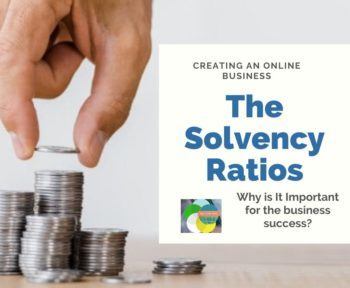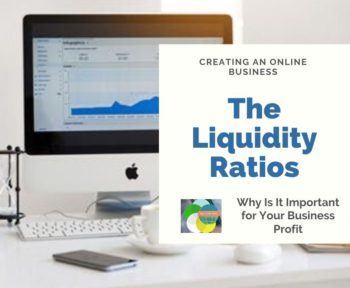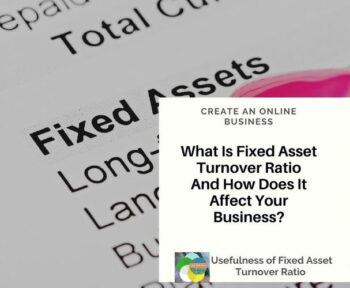Every business has expenses. It is well-balanced businesses that turn revenue. Businesses have other obligations besides fixed costs like loans. Solvency tests a company’s ability to make a profit. It takes into account a company’s ability to pay off debts. Also, financial health takes revenue into account. A close second is the interest coverage ratio. This ratio shows a company’s potential to pay off debts.
Startups and small businesses rely on leverage. Using leverage, they can better understand their financial situation.

For example, leverage tells what companies can and cannot afford. Smaller companies rely on investors to keep them alive. Also, investors look at solvency.
This number helps when deciding if it is worth the risk. They compare ratios along with solvency.
Figures like interest coverage ratio and leverage ratio count. These numbers demonstrate the health of companies.
The health of a company lets investors know if it is worth the risk. Every business needs help in the beginning. Yet, investors won’t touch them without analysis.
Leverage Definition: What Does It Mean to You?
Looking at leverage says a lot about a company. It takes equity into account, comparing it with debt.
This reveals overall financial health. A company can use its financial health to help them expand. The way that businesses use this information is a leverage ratio.
This takes into account the total debt along with income and cash flow. This ratio comes in handy during market analysis creating
The financial leverage ratio comes in several forms. Each form provides information about a company’s financial health. The ratios used in calculating leverages are:
#1. Debt to asset
#2. Debt to equity
#3. Debt to capital
#4. Asset to equity
Potential investors know about risk. They use the chance for risk to see if an investment is beneficial. A company’s leverage tells a lot about paying down debt.
Clearly, investors care about paying off debts. The interest coverage ratio tells if earnings will cover costs.

There are three types of leverage ratios important to new business practices. Each one is important when doing business.
Operating leverage.
Fixed costs count in this type of leverage. If this number is high, costs and expenses are high. For instance, most companies with higher operating leverage rates rely on capital.
For this reason, this type of business needs to pump out products to secure profits. In doing so, they maintain a level of income enough to cover high fixed costs.
Financial leverage.
Financial leverage highlights the cost to keep operations running. Businesses cover initial costs starting with a loan.
Besides a bank loan, they look to investors for help. Both banks and investors will not lend money to risky businesses.
The reason is each one hopes to earn money. Financial leverage is a good indicator of company earnings.
If companies earn enough money, they can cover costs. In other words, they stay away from fault or bankruptcy.
Combined leverage.
Combined leverage is the ultimate indicator of financial health. It takes operating and financial leverage into account.

Also, it is an important factor for shareholders. It shows how much revenue is up for grabs. Investors use this to make smarter investments. These investments depend on shares and earnings.
What Is Interest Coverage Ratio?
Company health is shown by the Interest coverage ratio. It considers all costs. This ratio shows how a company’s profits will cover the interest. The interest coverage ratio uses both total earnings and interest.
Total operations depend on the interest coverage ratio. A low-interest coverage ratio could mean default. In other words, companies face bankruptcy.
A healthy company with a high-interest coverage ratio makes money. In addition to making money, they pay down expenses.
Therefore, a high ratio means superb financial health. In short, this health helps when deciding to expand or sell.
Using Leverage in Business.
Stability uses interest coverage ratio and leverage. This is important when taking the next steps. In addition, stability is used when borrowing money.
Companies use these funds to build assets. These assets come in handy when starting up. In the beginning, companies need all the help they can get.
Expansion is another area where leverage helps. For instance, a small loan provides funds businesses need to make changes.

These changes pay debts until they start turning a profit. That being said, the amount should not be too high. Businesses must make sure they are earning enough to cover costs and
Is Leverage a Good Thing?
Leverage can be a great thing. Companies use it to track payments by borrowing money. For instance, they can see the amount of time left to pay down debts. Plus, it helps them analyze assets.
Assets tell If companies are valuable enough to cover expenses. Most loans are used at the beginning of a business venture.
These loans aid in opening costs. In general, these are long term loans for larger amounts. Plus, profits pay down these debts if enough is coming in.
Another option decided from leverage is buyout. Investors put money toward the buyout of a company when seeing the potential. The safest purchases consider profits and how fast they turn.
Companies have the option to borrow from suppliers once everything is up and running. For example, this type of loan is smaller and paid off faster. Both are beneficial but, companies choose to depend on their leverage ratios.
Benefits of Leverage in Business.
There’s always a risk when borrowing money. As a result, companies stay away from loans. However, there are no gains without risk.
This is why it is important for companies to understand leverage. It is extremely beneficial to a company’s future.
1. Ownership.
Leverage allows owners to maintain sole ownership. This is the opposite of equity. To clarify, there is no need to partner or collaborate with a lender or investor. The company keeps all profits. It is difficult in the beginning but it pays off.
2. Pay Off.
Leverage takes a look at debt. It considers the time it will take. Investors consider debts before investment. The bad thing about partnering is profit sharing. In contrast, the good thing is to help with opening costs.
For example, all responsibilities are left for investors. As a whole, investors are great when starting but decrease profits.
3. Tax Breaks.
The IRA recognizes interest paid on leverage. This interest is considered a deduction. For example, when it comes time to file taxes.

Interest paid is a reduction in taxable income. This is always a benefit for small businesses.
Fewer taxes mean more hard-earned money stays in their pocket. Every company wants tax breaks. And leverage is what helps to find them.
Know Where you Stand.
Working with leverage is easy. It won’t cause stress when dealing with finances. Deciding to borrow funds requires a look at leverage.
The reason being leverage is the make or break of success. It shows when companies can make their next moves.
For example, they can use data to take steps toward success. Numbers tell a very detailed and useful story for businesses. Things like profits and stability are key to doing business.
Not only business but a successful business. In most cases, financial health and leverage show where companies stand.
They reveal answers to important decisions about the future and beyond. For a better way to do business, consider leverage.










This is an interesting topic you have covered I have never really grasp the concept of leveraging because of the business jargon they would use to explain, this is well laid out in simple terms for the average person to understand, I am currently at this phase in my business so this is article is greatly appreciated
Thank you for your comment. please share it among your friends that will more help them too.